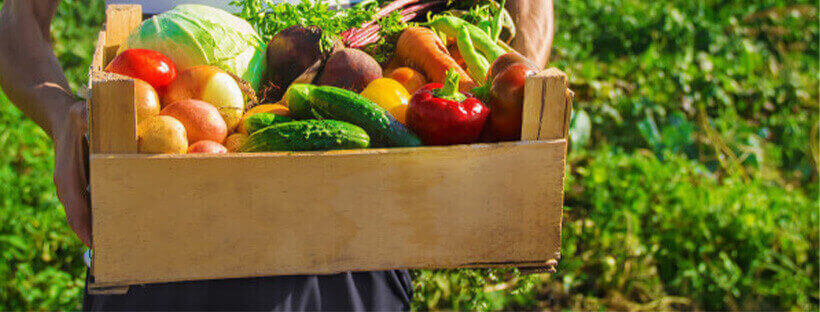Orchard in my House: Grow Your HEALTH and HAPPINESS and eat it too
 24315
24315

super easy
Ahh! The joy you get when you witness that first tiny leaf growing out of your kitchen pot.! It is so heart-warming! A vein of happiness tends to spiral inside your heart once you witness the blossoming veins on your home-grown plants. Harvesting your fruits and vegetables sounds like a very tedious process and can be perceived as complex by many, but, in reality, it is much simpler than it sounds. It is an excellent solution to numerous health, environmental, and financial woes and is considered the most ultimate act of green living. It cuts down on the distance food has to travel from where it is produced to the ultimate consumer, and in the process, cuts down all the chemicals and pesticides along the way. Whether it is growing in your garden or your pots, either way, growing your food is a rewarding experience. The ideal place to grow vegetables is in your backyard, i.e., your garden. It would be best if you planned how your garden would be laid out before planting. Considering how much sun your garden will get before choosing a spot is crucial. Healthy, rich soil is key to a successful and productive vegetable garden. A soil test can test soil fertility and pH and offer valuable insight into fertilizers and amendments for the best produce. It is advisable to stick to a small plot for growing vegetables for a year or two. A four-by-eight-foot bed is ideal for a starter veggie garden and will give a lot of space for growing a handful of crops. With your first veggie garden, it is advisable to pick only four to five types of veggies; trying to grow too many in a confined space will make you end up with a smaller harvest rather than a larger one. Most importantly and fundamentally, you should know the amount and the time to water the plants. Newly seeded beds require frequent watering, but most established crops need one to two inches of water per week. Some people might not be privileged to own a backyard or a garden to grow their food, but you don’t always require a lavish garden to grow your veggies and fruits. All you need is a pot or a container! Many varieties of fruits and vegetables can thrive in containers, which might be boxes outside your window or pots on your patio. Some notable ones that you can grow in small spaces and the best methods for growing them are as below: Spinach: Spinach loses its nutrients quickly; hence eating store-bought spinach is no good in terms of nutrients. Growing spinach in containers is very easy, and they can grow in shallow containers as well. Spinach is amongst the top ten vegetables to grow in pots in winters.  Cauliflower & Cabbage: Shallow rooting vegetables are excellent for container gardening. Cauliflower and Cabbage are shallow rootings and early harvest vegetables. In one winter season, you can have at least two crop cycles. Hence they are excellent to plant in your kitchen in winters.
Cauliflower & Cabbage: Shallow rooting vegetables are excellent for container gardening. Cauliflower and Cabbage are shallow rootings and early harvest vegetables. In one winter season, you can have at least two crop cycles. Hence they are excellent to plant in your kitchen in winters.  Carrot: Carrots take a lot of time to grow, sometimes even a hundred days. But it is still a very viable vegetable to grow in pots because, in winters, they can be used as a companion plant to other vegetables like tomatoes.
Carrot: Carrots take a lot of time to grow, sometimes even a hundred days. But it is still a very viable vegetable to grow in pots because, in winters, they can be used as a companion plant to other vegetables like tomatoes.  Tomato: The most favorite vegetable of all gardeners, tomatoes can be grown in various exotic varieties. Cherry tomatoes are a type you should have in your pots, they are juicier, and the taste is incomparable to the ones bought from stores.
Tomato: The most favorite vegetable of all gardeners, tomatoes can be grown in various exotic varieties. Cherry tomatoes are a type you should have in your pots, they are juicier, and the taste is incomparable to the ones bought from stores.  Broccoli: Another plant that is happy to grow in pots; it gets a vast spread. You can plant the seeds directly in the containers, and the seeds germinate at 23 to 27 degrees Celcius. Temperatures must be not too high during and post-germination.
Broccoli: Another plant that is happy to grow in pots; it gets a vast spread. You can plant the seeds directly in the containers, and the seeds germinate at 23 to 27 degrees Celcius. Temperatures must be not too high during and post-germination.  Radish: The most common way of propagating radishes is from seeds, and such seeds can be bought online or in a garden shop. You should plant them directly in desired pots, sow the seeds ¼ or ½ inch deep and one inch apart. The seeds would germinate in three to ten days.
Radish: The most common way of propagating radishes is from seeds, and such seeds can be bought online or in a garden shop. You should plant them directly in desired pots, sow the seeds ¼ or ½ inch deep and one inch apart. The seeds would germinate in three to ten days.  Now that the winter season is upon us, this time is even more conducive for growing fruits and vegetables than any other season. This growing season is also called the ‘Rabi’ season, and some vegetables in India are produced as ‘Rabi’ crops. These vegetables and fruits include cauliflower, capsicum, spinach, onions, green peas, carrots. Some notable fruits include apples, grapes, oranges, pomegranate, guavas, and sweet potatoes. Winter fruits make for a soul-refreshing multi-season garden design. During these pandemic times, home-grown fruits and vegetables can also benefit you as they wouldn’t come in contact with anybody else apart from your own home’s hygiene. Along with its multiple benefits, home gardening is a soul-satisfying hobby because you are ultimately creating something and watch it blossom and flourish. So next time, when your family feels like having Chinese food, don’t treat them with food from outside; grow veggies in your garden and give your family the healthy nourishment they truly deserve!
Now that the winter season is upon us, this time is even more conducive for growing fruits and vegetables than any other season. This growing season is also called the ‘Rabi’ season, and some vegetables in India are produced as ‘Rabi’ crops. These vegetables and fruits include cauliflower, capsicum, spinach, onions, green peas, carrots. Some notable fruits include apples, grapes, oranges, pomegranate, guavas, and sweet potatoes. Winter fruits make for a soul-refreshing multi-season garden design. During these pandemic times, home-grown fruits and vegetables can also benefit you as they wouldn’t come in contact with anybody else apart from your own home’s hygiene. Along with its multiple benefits, home gardening is a soul-satisfying hobby because you are ultimately creating something and watch it blossom and flourish. So next time, when your family feels like having Chinese food, don’t treat them with food from outside; grow veggies in your garden and give your family the healthy nourishment they truly deserve!
Follow us-
Instagram/ Facebook/ Youtube/ Pinterest





Leave a Reply